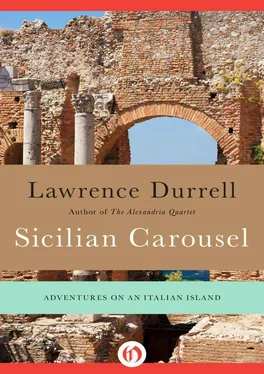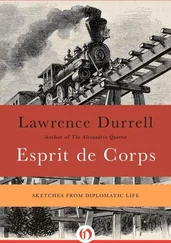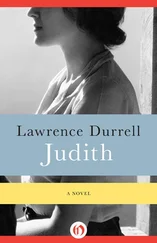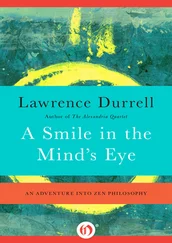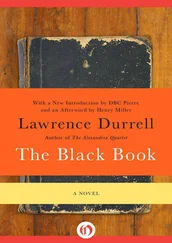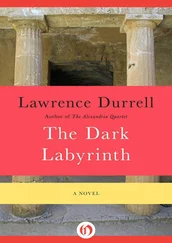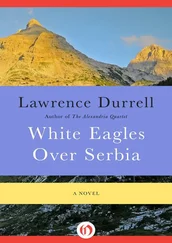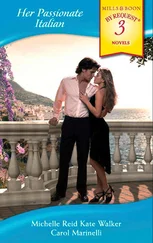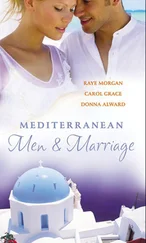Lawrence Durrell - Sicilian Carousel - Adventures on an Italian Island
Здесь есть возможность читать онлайн «Lawrence Durrell - Sicilian Carousel - Adventures on an Italian Island» весь текст электронной книги совершенно бесплатно (целиком полную версию без сокращений). В некоторых случаях можно слушать аудио, скачать через торрент в формате fb2 и присутствует краткое содержание. Год выпуска: 2012, Издательство: Open Road Media, Жанр: Путешествия и география, на английском языке. Описание произведения, (предисловие) а так же отзывы посетителей доступны на портале библиотеки ЛибКат.
- Название:Sicilian Carousel: Adventures on an Italian Island
- Автор:
- Издательство:Open Road Media
- Жанр:
- Год:2012
- ISBN:нет данных
- Рейтинг книги:4 / 5. Голосов: 1
-
Избранное:Добавить в избранное
- Отзывы:
-
Ваша оценка:
- 80
- 1
- 2
- 3
- 4
- 5
Sicilian Carousel: Adventures on an Italian Island: краткое содержание, описание и аннотация
Предлагаем к чтению аннотацию, описание, краткое содержание или предисловие (зависит от того, что написал сам автор книги «Sicilian Carousel: Adventures on an Italian Island»). Если вы не нашли необходимую информацию о книге — напишите в комментариях, мы постараемся отыскать её.
Sicilian Carousel: Adventures on an Italian Island — читать онлайн бесплатно полную книгу (весь текст) целиком
Ниже представлен текст книги, разбитый по страницам. Система сохранения места последней прочитанной страницы, позволяет с удобством читать онлайн бесплатно книгу «Sicilian Carousel: Adventures on an Italian Island», без необходимости каждый раз заново искать на чём Вы остановились. Поставьте закладку, и сможете в любой момент перейти на страницу, на которой закончили чтение.
Интервал:
Закладка:
This was duly done and Saint Rosalie saved the city and became its patron. The relics of the little saint were placed in a silver coffer and duly housed in the main cathedral of Palermo while her festival (July 15) leads off several days of rejoicing and present giving, with brilliant and extravagant firework displays and religious services. It was the dress rehearsal to this event that Deeds had so luckily attended with Miss Lobb. They were so thrilled with all there was to see that they did not get back to the hotel for several hours. By then Miss Lobb was completely sobered and went to bed with expressions of rapturous gratitude. Deeds felt ennobled, if a bit exhausted, or at any rate so he admitted. But it was while he was embarking on an account of his wild night out with Miss Lobb that Saint Rosalie intruded on our sunlit breakfast in person, so to speak. Maroons started going off all over the town and for those not in the know there was a moment of pardonable anxiety. I thought the strikers had blown up the hotel. The Bishop, who was in the pool, almost gave signs of cardiac failure — he thought for a moment that the Catholics had struck home. But after the first smoke had cleared a smiling Roberto came to explain the noise, and suddenly we all noticed that everything was all right again, the stress and fatigue. We were all friends again and full of joy abundant — a new mood had set in, though there was no real reason for it unless it be a change of wind in the night. Or the soothing effect of little Rosalie’s sanctity.
Good humor, like the bath water, had all of a sudden returned to the company and breakfast in the bright sunlight of a Palerman summer morning was almost a convivial affair. After the onslaught of the maroons had been explained away, that is. But this morning we were to bend our mind to sterner cultural things than the processions which had already started forming in the streets of the capital. We were going to visit the Archaeological Museum in order to see the sculptural treasures which the wretched archaeologists had carefully removed from Selinunte. It was distasteful to be forced to replace them mentally in order to admire them — I was reminded of my youth when I used to traipse round the Elgin Marbles in the British Museum, trying in a dispirited fashion to replace them upon the Acropolis which I had not as yet seen, with the help of photographs. It did not work, context is everything; besides, these were decorative additions to structure not independent art works.
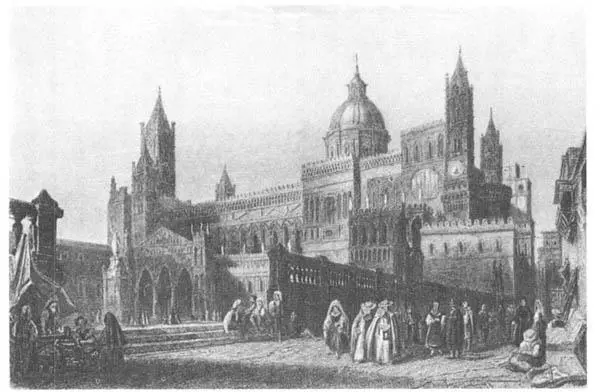
PALERMO, THE CATHEDRAL
Nevertheless the Sala de Selinunte contains real treasures like the famous Zeus and Hera on their wedding day, Heracles strangling an Amazon; they brought back memories of the deserted dunes, melting away in the sunlight above the lonely blue sea. There were other fine things too, from Himera and from Agrigento — indeed the museum is apparently the largest Greek Classical Museum outside metropolitan Greece itself. But something stuck, some subtle change of key, of rhythm; it was like a grain of sand in a Thermos flask. One somehow couldn’t receive the full impact of these disembodied objects, however beautiful they were. Something that Deeds said made me realize that the reason was, of course, Saint Rosalie. What had happened was that we had stepped out of the Greek and Roman world, the historical Sicily of ancient times; and we had entered a new Sicily, the Arab, Norman, Spanish Sicily with its own notions of temporal beauty. The arrival of Saint Rosalie had been timely — together with her uncle William the Good — she symbolized this sudden change of axis and emphasis which was the message that Palermo held for us. We were now in modern times, and the effect of the Greek spirit had become distant, diluted, all but lost under the waves of cultures more recent if just as agitated. That was why these precious Greek relics seemed to lose their density and weight. Yes, objectively one realized that they must be seen, for even as fragments many of them were superb. Nor do I really know if the other members of the party shared this queer feeling that they were somehow dispossessed of their birthright in being put on view in this spacious and beautifully lit museum. But altogether it was an hour agreeably spent in a cool cavern of sculpture and nobody could pretend to be the worse for the experience.
It was a pleasant walk too to rejoin the little bus which waited for us in a small piazza nearby. Of course I realized that we would hardly see a tithe of the treasures available in Palermo, for we were leaving for Messina in the early afternoon. Nevertheless when I actually stood in the hushed shadow of the cathedral in Monreale and waited my turn to enter its august portals, I knew what it was. It was as if we had turned a page in the storybook which was Sicilian history and emerged into a period which echoed the most unusual juxtaposition of styles imaginable. This pure Palermo Sicilian is an extraordinary thing, the most beautifully realized merging of the grave and lofty Norman shapes with riotous and intricate Byzantine and Moorish decorative motifs, a brilliant syncopation of the grave central theme. It was my first taste of Sicilian baroque-Moorish — I think there is no established designation for this weird Gaudi-Arabian-Gothic. But it comes off in a magnificently innocent and playful way. The central religious solemnity of the impulse has been rendered childish, naïve and touching as a child’s view of the Garden of Eden. Most of this work belongs to the period of Norman rule. Indeed the cathedral was the work of William the Good, while in its precincts lay the tombs of the other Williams, Good, Bad and Downright Indifferent; but no tomb for Rosalie who had first brought us this inkling of a sea change.
A whole town has grown round the cathedral but it draws its life from this great munificent work, one of the wonders of Christendom today. The marble rood screen, the sparkling mosaics and the gorgeous Byzantino-Moorish decoration make the whole thing feel as vibrant in color as the heart of a pomegranate. Yet quickened and excited as one was by the novelty of this style one could not help asking oneself who actually worshipped here: or did all the denominations regard it as their own altar of worship? “You have a point,” said Deeds who had read all the relevant books on the subject. “The dons seem to think that the style grew up as a kind of political accident; the Normans wanted to create an all-inclusive style for political reasons — they wanted a home-grown Sicilian style to emphasize the separateness of the island, its political uniqueness. With all the many races and religions it was very necessary to seek some kind of unifying motif. Maybe so. Myself I think that it was even simpler — giving work to the local artisan, creating jobs for the locals in order to keep them happy. It was completely unplanned; it just happened that the mix was a godsend, and worked. Genius in fact but quite accidental. And the jobs kept the chaps quiet and silenced criticism. These bloodthirsty northern invaders were sometimes relatively peaceful people and longed for a quiet life; why not mollify local resentments and satisfy local needs? Unless you prefer to believe that old William was an architectural genius and had the whole thing built to specification. I don’t myself.”
And there we had to leave the matter for I was determined to spend a few moments loitering in the cool and water-sounding colonnades which stretched away tenebrously from one side of the main building. Deeds left me for a moment to buy a few postcards in order to illustrate his remarks with views of the Cefalu Cathedral.
Yes, it was a new world with a different world style and attitude. The various elements of this Norman-Oriental thing had no right to fuse so happily together and form something which was downright cheeky exuberant but without archness. After all, when one thought of the relative gravity and staticness of the two differing styles — Norman architecture reaching to high heaven like a grave bear, and the Oriental feeling for intaglio, for marquetry, for the involuted forms of the Arabic script. No, it should not have worked so marvelously well as to constitute something preeminently Sicilian. One thinks of a place where the marriage did not work — Cyprus, where the Turks knocked off the towers of medieval cathedrals to add minarets; and of course the pictures one has seen of the Acropolis transformed into a mosque.… Here the whole thing is a triumphant success — would that something similarly fond and creative had emerged on the political scale after the long suppurating Crusades. I made my way slowly back to the huge doors and looked for traces of my friend. He was busy postcard hunting in the veritable tourist bazaar that had grown up in the little square outside the cathedral. What mountains of rubbish in bad taste the poor tourist is obliged to buy, for want of something pretty to spend his souvenir money on. Or have they gauged our taste aright? It would seem so. One wonders what the old Greek equivalent would have been — in the time of Pausanias say. Sellers of magic herbs, snake oil (still used in Cyprus against the sting of scorpions), spells.… “Nothing ever changes,” said Deeds comfortably when I broached the idea to him. “Any Greek cathedral or Italian has always been like that; first of all it was a place of pilgrimage, you came from far away, you bought a candle, you left a thank you gift or an ex voto . Now in order to mark the event you felt you ought to buy a medal or a trinket which would prove to your pals back at home that you had actually done the trip — you had been to Mecca.”
Читать дальшеИнтервал:
Закладка:
Похожие книги на «Sicilian Carousel: Adventures on an Italian Island»
Представляем Вашему вниманию похожие книги на «Sicilian Carousel: Adventures on an Italian Island» списком для выбора. Мы отобрали схожую по названию и смыслу литературу в надежде предоставить читателям больше вариантов отыскать новые, интересные, ещё непрочитанные произведения.
Обсуждение, отзывы о книге «Sicilian Carousel: Adventures on an Italian Island» и просто собственные мнения читателей. Оставьте ваши комментарии, напишите, что Вы думаете о произведении, его смысле или главных героях. Укажите что конкретно понравилось, а что нет, и почему Вы так считаете.
